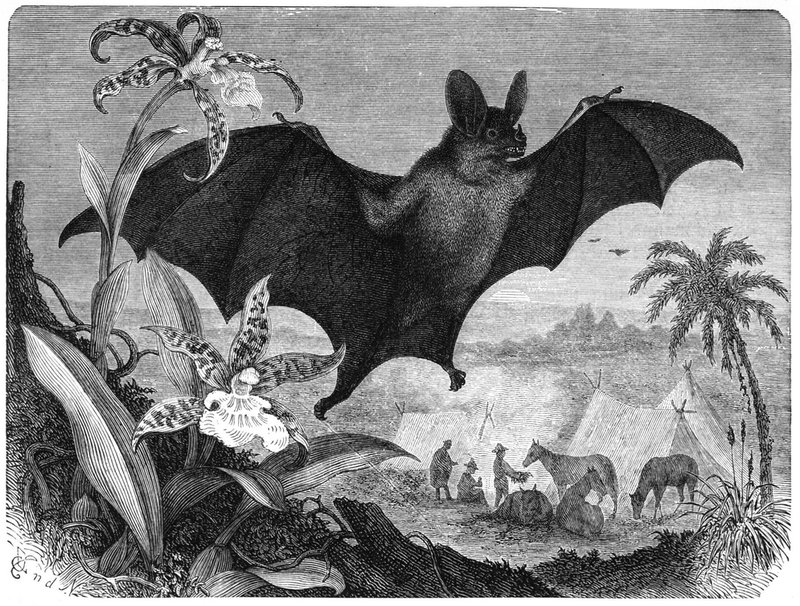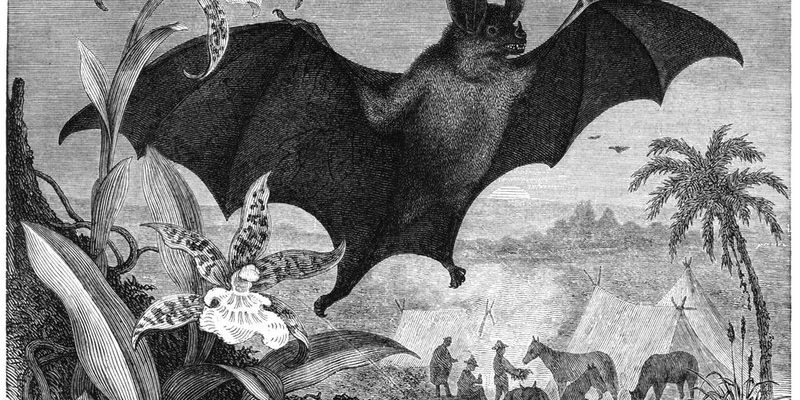
The vampire bat, scientifically known as *Desmodus rotundus*, primarily feeds on the blood of other animals. While that fact might send shivers down your spine, it’s also a rich source of symbolism and storytelling. From ancient tales to modern pop culture, the vampire bat has become a famous figure in myths, legends, and even movies. Let’s delve into how this creature has left its mark in culture and folklore, exploring the layers of meaning and representation that come with it.
The Origins of Vampire Bat Folklore
Folklore surrounding vampire bats can be traced back to ancient civilizations. In cultures where bats inhabit, stories began to circulate about these creatures and their nocturnal habits. For instance, in some South American cultures, people believed that vampire bats could transform into humans. This connection highlights how closely intertwined nature and myth can be.
In many cases, these stories served as cautionary tales. For example, early farmers, noticing their livestock were mysteriously losing blood, might have blamed the vampire bat, attributing sinister powers to its presence. The bat became a scapegoat, a representation of fears surrounding the unknown and the invisible forces that preyed on their livelihood. Honestly, it’s fascinating how such a small creature can evoke such deep-seated emotions and beliefs.
Symbolism in Different Cultures
Across various cultures, the symbolism of the vampire bat varies. In some places, bats represent rebirth and transformation. This concept stems from their ability to navigate the darkness of the night with ease, reminding us that even in our darkest moments, there’s the potential for change. Imagine seeing a bat fluttering freely through the night sky; it reminds you that life goes on, and there’s beauty even in the shadows.
Conversely, in other cultures, the vampire bat embodies fear and danger. In Western folklore, particularly during the Middle Ages, bats were often associated with witches and the supernatural. This association fueled myths about vampires and the creatures that aided them. Many tales depict vampire bats as carriers of disease or as agents of misfortune, linking them to the fear of contagion. You might be wondering how something so small can carry such weight in our collective imagination.
Vampire Bats in Literature and Film
The representation of vampire bats in literature and film has evolved over time, integrating elements from ancient folklore and contemporary creativity. A notable example is Bram Stoker’s iconic novel, *Dracula*, published in 1897. In this classic story, the vampire – often linked to bats – takes on a menacing, charismatic persona. It’s no wonder that Stoker’s portrayal birthed a fascination with the vampire mythos that continues to this day.
Modern films have also picked up on this theme, portraying vampire bats as either villains or misunderstood creatures. For example, movies like *The Batman* or *Anaconda* cast bats in a negative light, emphasizing their eerie nature. On the other hand, some documentaries and family-friendly films showcase the beauty of bats, focusing on their ecological importance. This duality in representation mirrors how people view these creatures in real life—both with fear and wonder.
Vampire Bats and Science
While folklore paints a colorful picture of vampire bats, the scientific reality is equally intriguing. These bats are remarkable creatures that play an important role in their ecosystems. They primarily feed on the blood of other animals, usually livestock, but they do it in a way that minimizes harm. Vampire bats have anticoagulant properties in their saliva, which allows them to feed without causing severe damage.
This fascinating biology has even led to scientific advancements. Researchers have studied the anticoagulant properties of bat saliva to develop medications for human use. It’s interesting how the vampire bat, often seen as a villain in folklore, has contributed positively to science and health. It’s a perfect example of how reality can often be more surprising than legend.
Vampire Bats in Contemporary Culture
Today, vampire bats are more than just folklore; they have found a prominent place in contemporary culture. You’ll find references to them in fashion, art, and even social media. Think about how often bats are portrayed around Halloween, becoming symbols of the spooky season. Costume shops stock vampire bat-inspired decorations, and many people love to incorporate bat motifs into their festive attire.
In addition, the popularity of vampire bats has spurred a fascination with conservation efforts. With the decline in bat populations due to habitat loss and diseases like white-nose syndrome, people are beginning to recognize the importance of these creatures. Conservationists aim to educate the public on how crucial bats are for pollination and pest control. It’s a timely reminder that our perceptions of these animals can have real-world impacts.
The Intersection of Culture and Conservation
As awareness grows around the ecological roles of vampire bats, there’s an increasing push to balance cultural narratives with conservation needs. Understanding the myths surrounding these creatures can foster empathy. Instead of viewing vampire bats solely as pests, people can appreciate them for their uniqueness and ecological contributions.
There are many ongoing conservation programs aimed at protecting bat habitats, and educating communities about their benefits is crucial. For instance, in Latin America, some initiatives focus on demonstrating how vampire bats can help control certain pests in farms, thus improving crop yields. This practical approach aligns old folklore with modern agricultural practices, helping to reframe how these creatures are viewed.
The vampire bat serves as a perfect example of how culture and folklore shape our understanding of the natural world. From ancient myths to modern representations in media, these creatures evoke a mix of fascination and fear. They remind us of the power of storytelling in shaping perceptions and highlighting both the beauty and the horror of nature.
Ultimately, embracing the mystery of the vampire bat can lead to a deeper appreciation for wildlife and the ecosystems we share. By merging cultural narratives with conservation efforts, we can foster a more respectful relationship with the creatures that inhabit our planet, ensuring that they remain a part of our world for generations to come.

